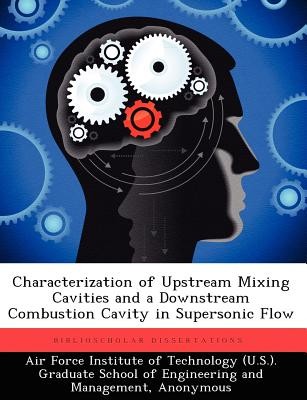
- We will send in 10–14 business days.
- Author: Adam P Quick
- Publisher: BiblioScholar
- ISBN-10: 1249450276
- ISBN-13: 9781249450276
- Format: 18.9 x 24.6 x 0.7 cm, softcover
- Language: English
- SAVE -10% with code: EXTRA
Characterization of Upstream Mixing Cavities and a Downstream Combustion Cavity in Supersonic Flow (e-book) (used book) | bookbook.eu
Reviews
Description
A key area of study in air-breathing hydrocarbon-fueled scramjet combustors is the characterization of cavity-based fuel injection and flame holding. One issue concerns oscillatory disturbances caused by trapped vortices in the main flame holder cavity as a fuel-air mixing enhancement technique. Previous research demonstrates that oscillatory disturbances can be carried downstream via the shear layer and alter the oscillatory characteristics of a downstream cavity. This study investigates the mixing effectiveness of three upstream direct-fueled mixing cavities as well as the effect on the oscillatory behavior of the downstream combustion cavity by the upstream mixing cavity. The three upstream mixing cavities are characterized in Mach 2 freestream flow with injection at three locations within each cavity. Non-intrusive visual data are collected using the nitric oxide (NO) Planar Laser Induced Fluorescence (PLIF) diagnostic technique to characterize mixing and shear layer influence. High frequency response pressure transducers measure pressure fluctuations in both the upstream and downstream cavities for comparative analysis. Injection at the upstream wall of the cavity provided greater penetration height into the freestream as well as faster mixing with the freestream compared to injection at the center or aft wall of the cavity. The pressure oscillations in each cavity showed strong similarities; however, the amplitudes of the frequencies were too small to be effective in lifting mass into the freestream.
EXTRA 10 % discount with code: EXTRA
The promotion ends in 17d.19:30:14
The discount code is valid when purchasing from 10 €. Discounts do not stack.
- Author: Adam P Quick
- Publisher: BiblioScholar
- ISBN-10: 1249450276
- ISBN-13: 9781249450276
- Format: 18.9 x 24.6 x 0.7 cm, softcover
- Language: English English
A key area of study in air-breathing hydrocarbon-fueled scramjet combustors is the characterization of cavity-based fuel injection and flame holding. One issue concerns oscillatory disturbances caused by trapped vortices in the main flame holder cavity as a fuel-air mixing enhancement technique. Previous research demonstrates that oscillatory disturbances can be carried downstream via the shear layer and alter the oscillatory characteristics of a downstream cavity. This study investigates the mixing effectiveness of three upstream direct-fueled mixing cavities as well as the effect on the oscillatory behavior of the downstream combustion cavity by the upstream mixing cavity. The three upstream mixing cavities are characterized in Mach 2 freestream flow with injection at three locations within each cavity. Non-intrusive visual data are collected using the nitric oxide (NO) Planar Laser Induced Fluorescence (PLIF) diagnostic technique to characterize mixing and shear layer influence. High frequency response pressure transducers measure pressure fluctuations in both the upstream and downstream cavities for comparative analysis. Injection at the upstream wall of the cavity provided greater penetration height into the freestream as well as faster mixing with the freestream compared to injection at the center or aft wall of the cavity. The pressure oscillations in each cavity showed strong similarities; however, the amplitudes of the frequencies were too small to be effective in lifting mass into the freestream.


Reviews